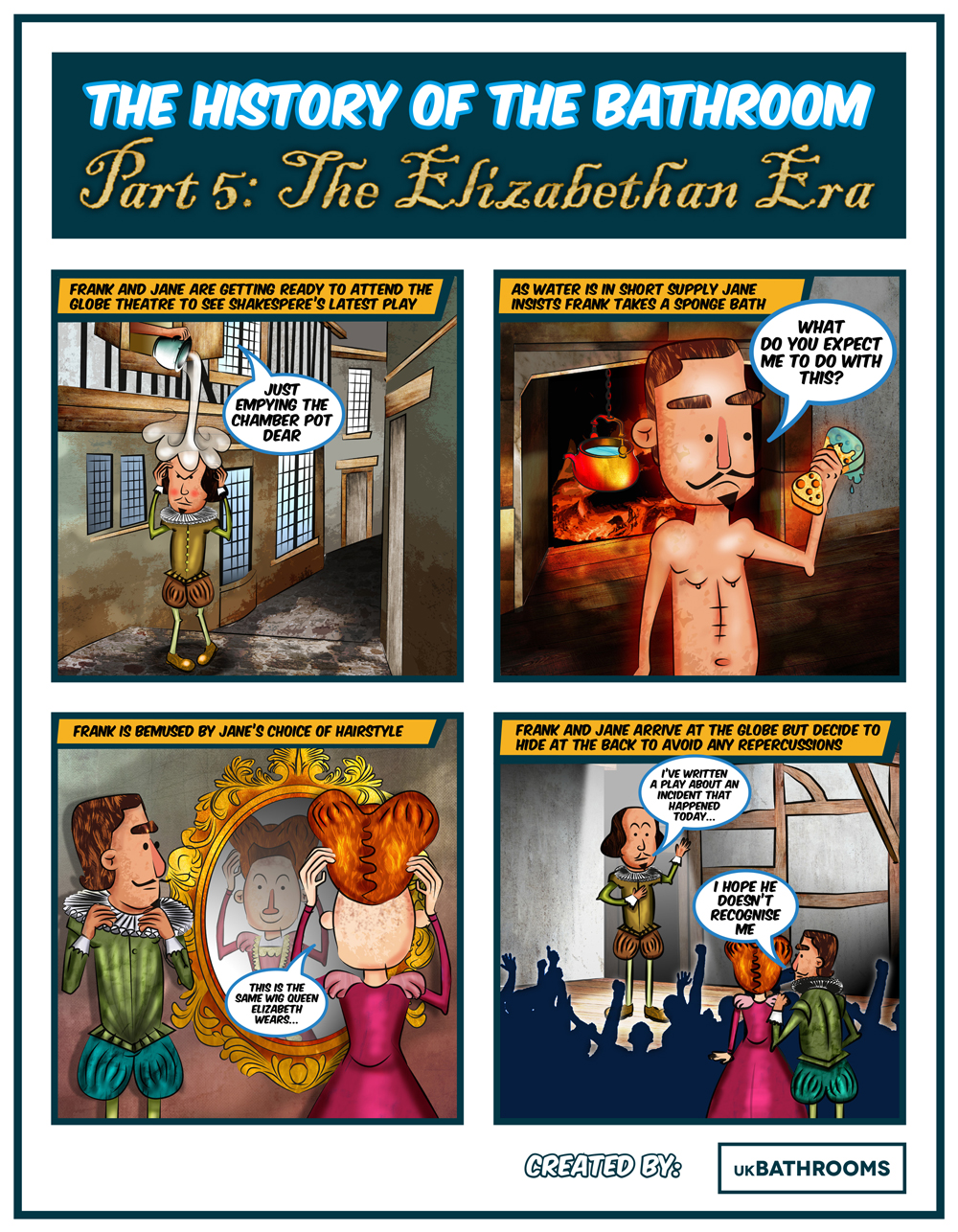Bathrooms through the ages part 5 – The Elizabethan Era
In part 5 of our look into Bathrooms through the ages we focus on the Elizabethan Era. Although cultural and social behaviours and life in general had improved since the regression of the Middle Ages, people during the Elizabethan Era still had a way to go in the hygiene stakes.
In 1596 writer and poet Sir John Harrington invented the first flushing toilet with a cistern, but the idea failed to catch on. Instead people were content to use their existing chamber pots which they would empty into the street, or public cess pits which were emptied by men called gong farmers.
Baths were still only really accessible by the upper class during the Elizabethan Era and would have been made from wood; these were filled with hot water heated on the fire. It was a tedious and time consuming task, so even the rich wouldn’t bathe all the time, instead opting to have a bath every other week. The poor would usually wash themselves down with a sponge or rag using water heated in a hanging basin over a fire called a laver.
The wealthy used scented soaps which were imported from other countries and was made with olive oil instead of animal fats used in laundry soap. Scented soap was a luxury and was very expensive, so the poor made do with using only water to wash themselves.
During the Elizabethan Era upper class women and the nobility wore lots of make-up. As Queen Elisabeth I grew older she began to wear more elaborate make-up to cover up wrinkles and the signs of ageing; this trend of wearing heavy white make-up with pink cheeks became fashionable with women during this time and helped to maintain the illusion of beauty.
Queen Elizabeth I also set the trend when it came to hair, she often wore it high over the head and secured it with wires to create a heart shaped frame around the head. The ideal hair colour during the Elizabethan Era was fair or red and naturally curly like the queen herself and imitating her hairstyle was made even easier after the first metal hairpins were introduced in 1545.
Wigs became popular for wealthy women around the 1570’s as were natural hairpieces which historians believe could have been made from horse hair or even children’s hair.
Women’s fashion consisted of ornate gowns worn over corsets to create an hour glass look; these were extremely expensive, so only the rich could afford them. Skirts were held in place by a hoop skirt or farthingale and corsets were stiffened with reeds, wood or whalebone.
Men’s fashion consisted of a linen shirt and a doublet (a snug fitting jacket adorned with lace, embroidery and ornate braiding). Men’s trousers consisted of two separate legs worn over linen drawers; this meant that a man’s genitals were only covered by a layer of linen and as hemlines grew the popularity of the codpiece became prevalent.
The codpiece was originally a triangle shaped piece of fabric which covered the gap in the front of the trousers, but as the years went by codpieces became bigger and were usually padded to emphasize the area rather than to conceal it.
One of the most evident fashion accessories during the Elizabethan Era was the ruff. The ruff was worn by men, women and children and consisted of a piece of ruffled fabric that was attached to the neck with a drawstring. Ruffs were changeable pieces of cloth that protected the wearer’s doublet from getting dirty at the neckline and were available in a range of different sizes and widths.
Going to the theatre was an extremely popular activity during the Elizabethan era and is regarded by many as being the most brilliant period in the history of English theatre. Theatrical plays were largely centred in or around London, but plays would also be performed by touring companies all over England. The most famous Elizabethan playwright was William Shakespeare who wrote many of the famous plays during the period. Many Elizabethan plays are still performed to this day and attract millions of tourists to London each year.
